
Teenage dog adolescent phase: What to know and how to manage it

Philippa Short
6 September 2022 | 8 minutes read
So, you think you’ve nailed your puppy’s schedule and training. But then all of a sudden, they’re ‘acting out’ and behaving as if they’ve forgotten everything they’ve learned. In other words, they’ve turned into teenagers.
Below, dog behaviourist Philippa Short shares her expert advice on this sometimes challenging phase in your dog’s life. Find out when it starts, what to expect, and how to manage your pooch’s adolescent years.
- What is the dog teenage phase?
> When does dog adolescence start?
> How long does dog adolescence last? - What are some common adolescent dog behaviours?
> Adolescent dog acting boisterous and lively
> Adolescent dog body sensitivity
> Adolescent dog humping
> Adolescent dog wee marking and licking
> Adolescent dog increased independence and guarding behaviour - What to know about training an adolescent dog
> How to set up your teenage dog for training success
> What to do if you’re having a tough time training your adolescent dog - How to care for your dog during their teenage phase
> Other ways to help calm your adolescent dog
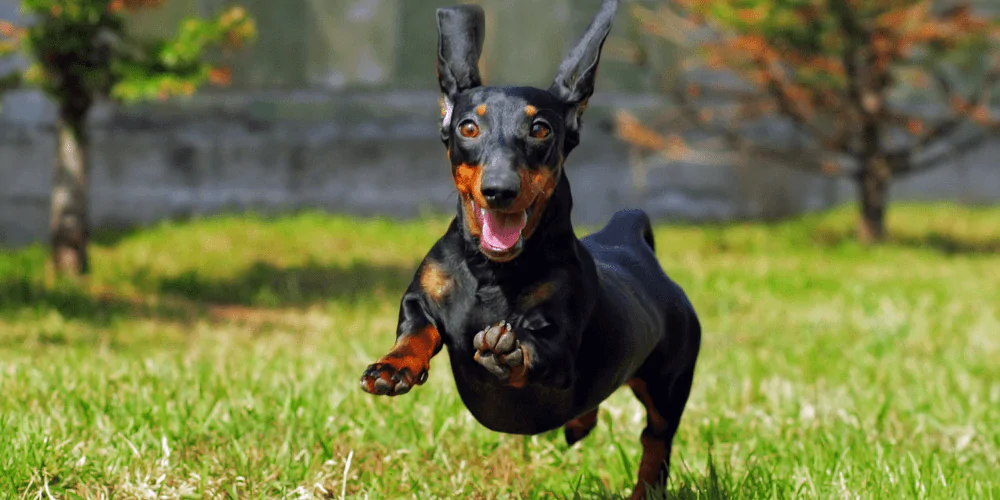
What is the dog teenage phase?
Like us, dogs have different developmental stages: puppy, juvenile, adolescent, and adult.
The adolescent phase is similar to the human teenage phase. It’s the start of your pup beginning their journey into adulthood.
Female canines see a significant increase in oestrogen and progesterone, while male dogs have a surge of testosterone.
Their brain is flooded with hormones and this helps turn them into a lean, mean, thinking machine. That’s why it’s common for your dog to start showing a wide variety of behaviours they didn’t have in puppyhood.
> When does dog adolescence start?
Smaller dog breeds can start adolescence from around five to six months of age. Larger breeds begin this teenage phase slightly later on.
Male dog testosterone starts to rise from about four to five months of age and reaches its peak at 10 months old. That’s a lot of testosterone – it can be as much as four times the level of an adult dog!
> How long does dog adolescence last?
Depending on the size of your pup’s breed, they’ll become an adult anywhere between 18 months and three years old. The bigger the breed, the longer it takes for them to mature.
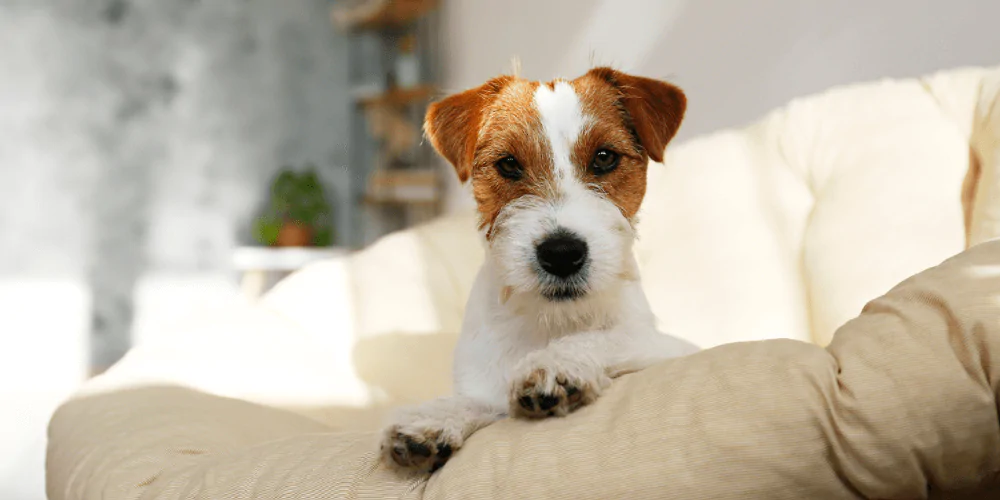
What are some common adolescent dog behaviours?
Picture your pooch as having an invisible and constant ‘work in progress’ sign on their collar during the teenage phase.
Thanks to those intense hormones, most adolescent pups seem to be in control and listening one minute, then scatter-brained and emotional the next.
Here’s some behaviours and behavioural issues often seen in adolescent dogs.
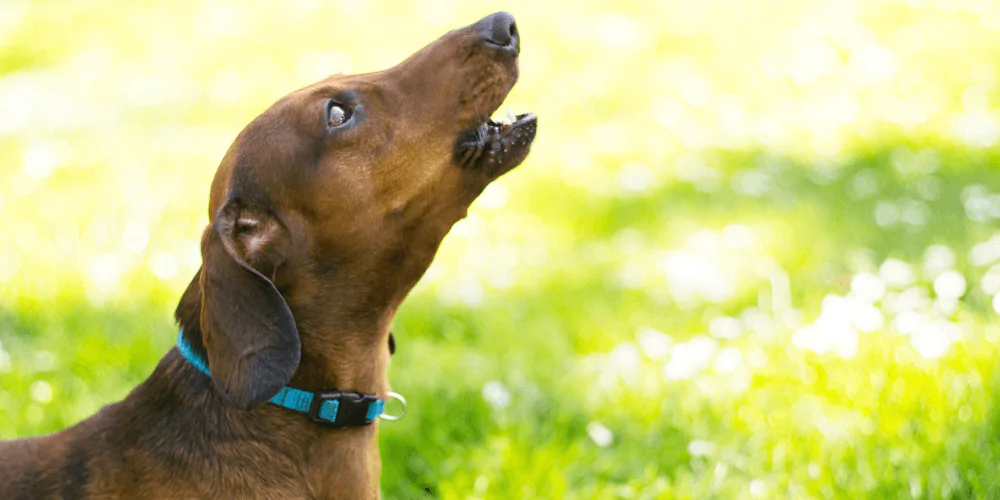
> Adolescent dog acting boisterous and lively
- Picking fights with other dogs of the same sex, though they can have ‘spats’ with dogs of the opposite sex.
- Getting overexcited with new people, often expressed through barking.
- Jumping up, even if they learned to control this as a puppy.
- Switching from teething to mouthing. Teething is about comfort, whereas mouthing is due to emotion and overexcitement.
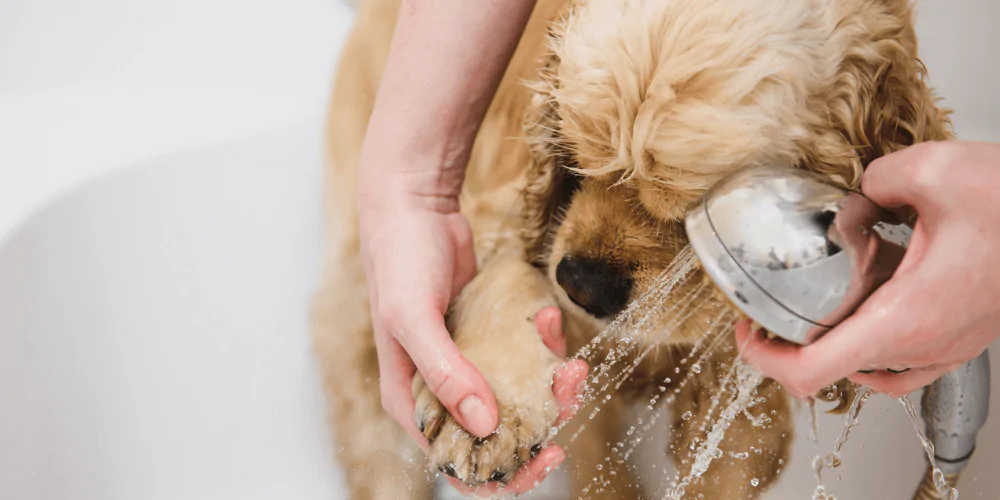
> Adolescent dog body sensitivity
- Extra hormones and body growth making physical touch and affection more sensitive. For example, they may start to dislike wearing a harness, being stroked, being groomed, or having their paws wiped.
- Look out for brand new body sensitivity that seems severe – you may want to check with your vet whether underlying pain could be the cause.
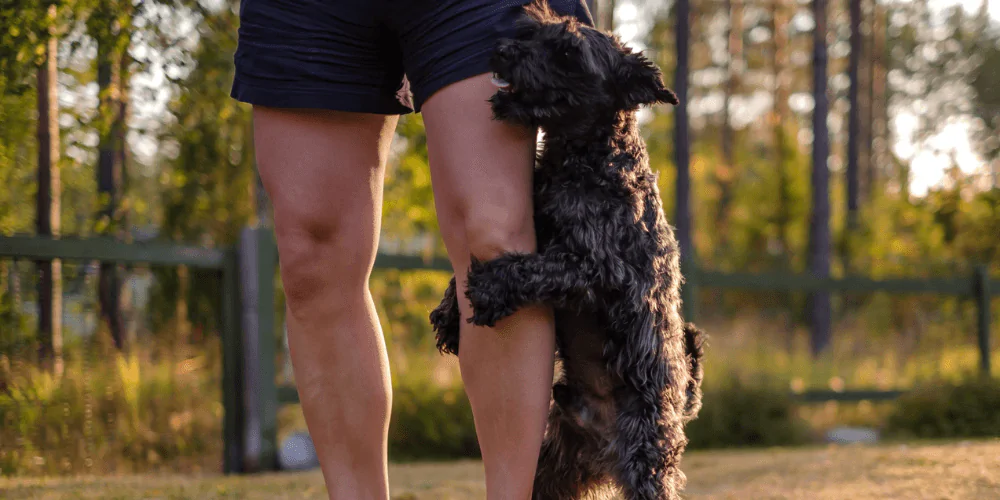
> Adolescent dog humping
- Humping to release testosterone or progesterone, which can then give your dog a sense of relief.
- Humping may also help your pup reduce their stress levels and so be carried on into adulthood.
- It can be amazing what items they choose for this behaviour, so don’t be afraid of their ‘love’ cushion or sofa.
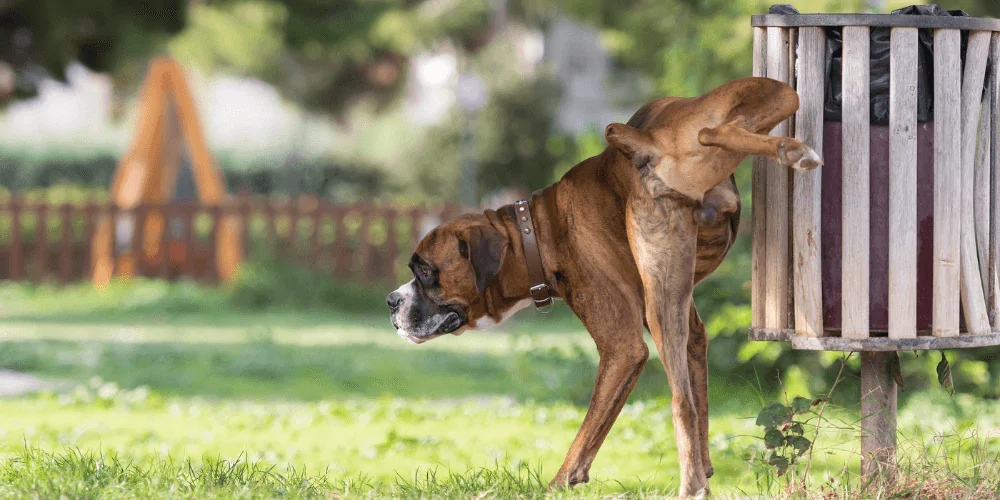
> Adolescent dog wee marking and licking
- Weeing to leave their scent around their environment. If you’re taking your teenage male or female dog into any indoor space, make sure they’ve gone to the toilet and completely emptied their bladder. Watch out for signs your dog may be thinking about leaving their ‘calling card’. Male dogs sidle up to things while female pups show sniffing intention to wee behaviour.
- Licking wee to suss out other dogs. Your pooch has an organ in their soft palate that can taste scent molecules in wee. So you may notice them licking another dog’s puddle to find out more about their emotions, health, and sexual maturity.
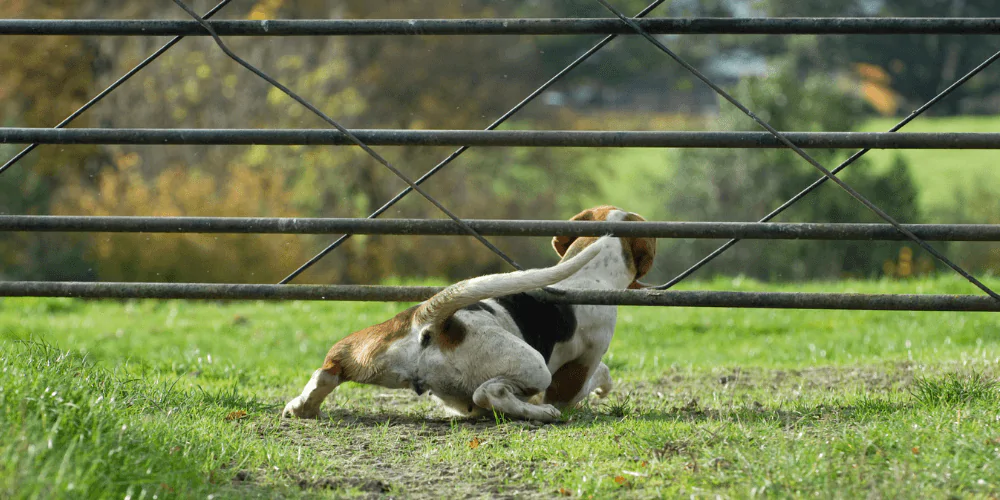
> Adolescent dog increased independence and guarding behaviour
- ‘Selective deafness’ making their formally solid recall become poor or non-existent. They’ll feel more cocky and confident, starting to go further afield on walks or focus on following a scent.
- Protecting resources like food, toys, space, or people may also show in adolescence, even if they didn’t do it as a puppy. Your dog holds onto things to prove they can do it.
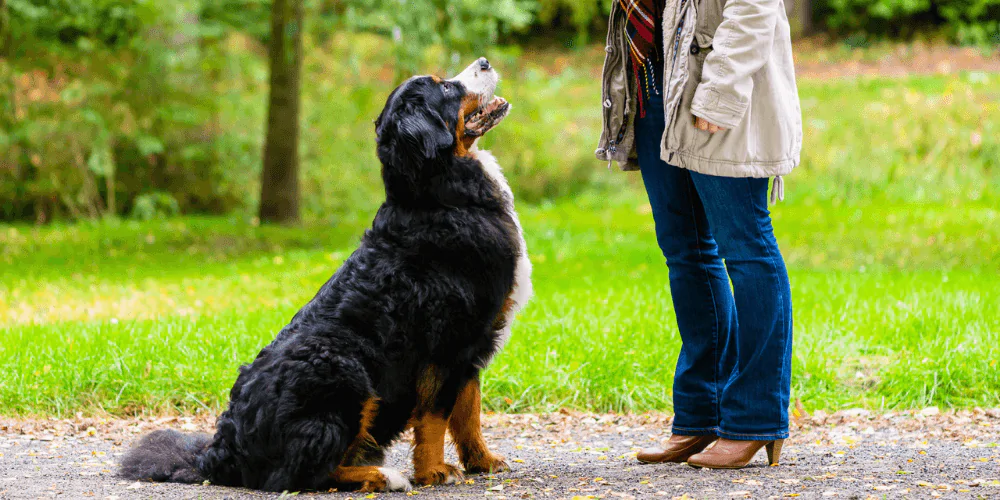
What to know about training an adolescent dog
Living and working with a teenage dog can be very frustrating. In fact, some pet parents give up their adolescent dogs to shelters because they reach their wit’s end and can’t cope.
But remember that adolescence is a phase and won’t last forever. Your teenage dog isn’t giving you a hard time, they’re having a hard time.
Your pooch needs emotional support and to be taught how to make good choices. So instead of telling them ‘no’, use positive reinforcement and tell them what you want them to do. Progress can be slow but keep persevering with your teaching.
A teenage dog is hormonal, emotional, frustrated, and possibly dealing with growing pains. If you handle them roughly or in a cross manner, one of their only options is to escalate their behaviour.
But that’s not who they are, so here’s how to handle things properly.
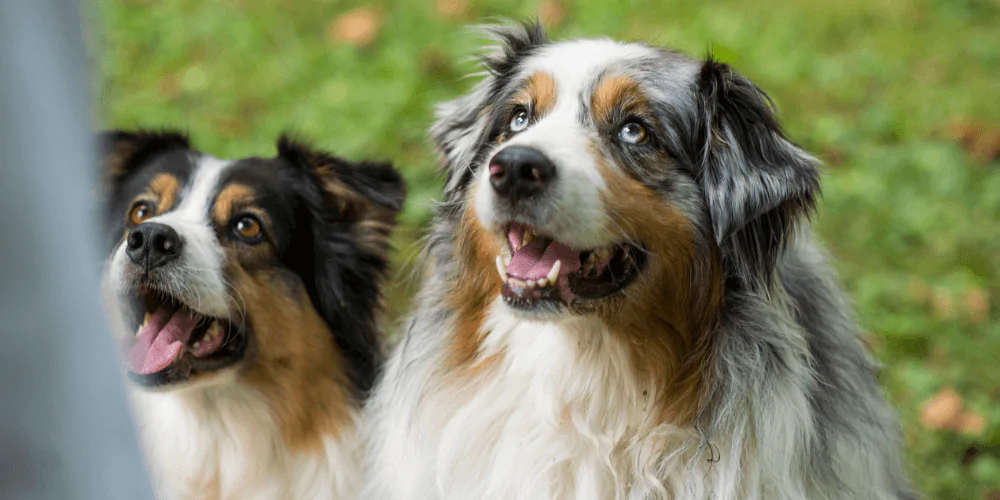
> How to set up your teenage dog for training success
Let’s take some great advice from another expert dog trainer, Jack Volhard. He always said to “think of the dog you’re training as your actor or actress. If you don’t like your play, you’re not directing well enough.”
Dogs aren’t daft – they do what works. They’ll always choose to repeat a behaviour that’s rewarded over one that isn’t.
- Try and catch your dog in the act of doing something good, then praise and reward. Focusing on the negative all the time hinders a positive relationship with your pup.
- Anything that’s practised becomes habit, so build up a range of good behaviours that you regularly practise and reward.
- Actively disrupt and distract unwanted behaviours to stop them becoming habits.
- Be clear on the cues you’re using and have one cue for each behaviour. ‘Sit down’ and ‘lie down’ may be different to our human brains, but not to your dog. They’re hearing the ‘down’ part each time and could get confused about what you’re asking. Confuse them too often and they’ll learn to start ignoring the cues you give.
- To counter their high emotions and distracted mentality, take high-value treats when out in public with your teenage dog. This could be things like cooked meat, cheese, raspberries, and carrot cubes.
- A high-value reward is whatever your dog sees as valuable, so find out what really excites your dog. Treats should be small, smelly, and easy to eat. Always give them in line with your dog’s dietary needs.
So, to summarise the key elements of training your teenage dog:
- Train, don’t blame
- Be proactive, not reactive
- Practice makes permanent
- What gets rewarded gets repeated
- Pay your dog in the right currency
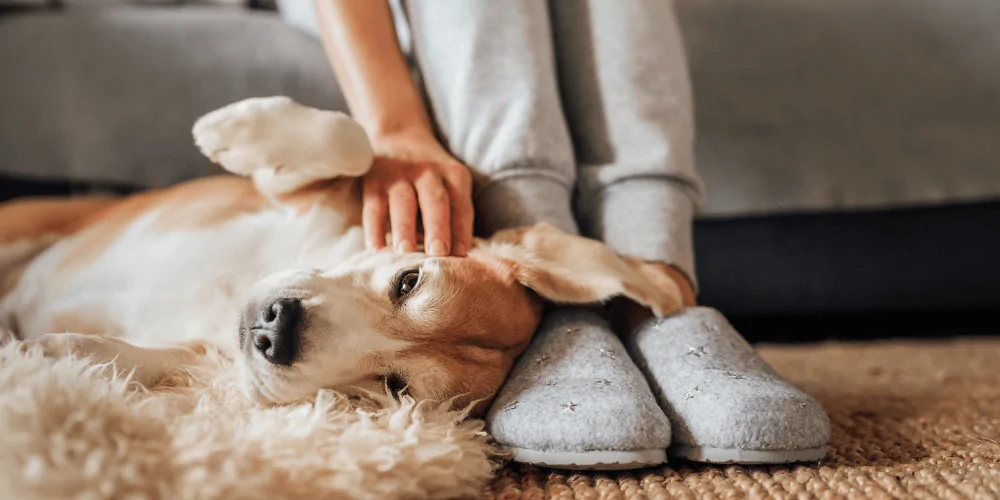
> What to do if you’re having a tough time training your adolescent dog
Being your dog’s life coach can be a tough job. We’re all human and can get frustrated or cross.
If you’re feeling exasperated with your pup and don’t think you’re getting through, take a deep breath and pause.
You can pick up training another day. Go and sit quietly with them. Take the chance to reconnect with your friend.
If you think you need help with your dog’s behaviour, our dog cover includes 12 complementary therapy sessions. So you can support your canine’s emotional and mental wellbeing journey.
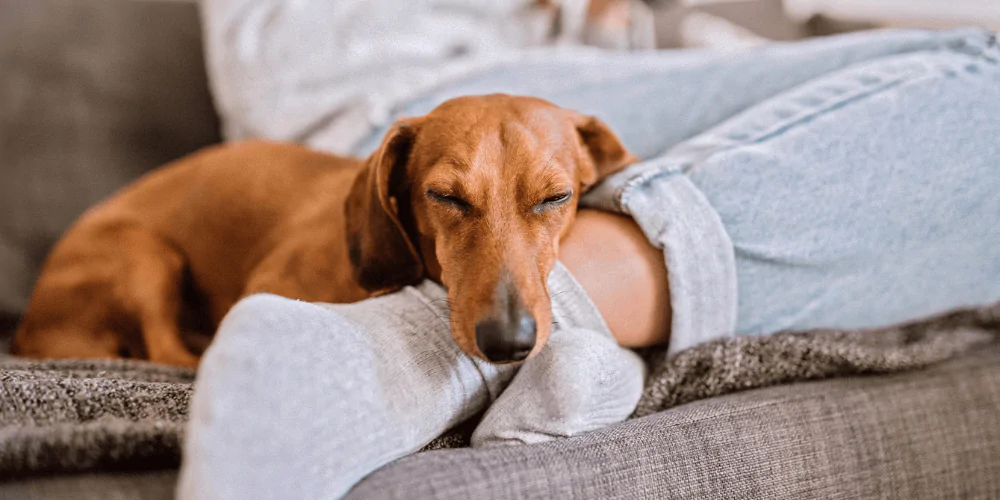
How to care for your dog during their teenage phase
As well as consistent teaching, you’ll also want to give your dog a healthy routine, appropriate exercise, and lots of enrichment.
- Lack of sleep is a huge issue for many teenage dogs. Make sure they’re getting lots of quiet down time and sleep during the day. No one wants to deal with a grumpy canine.
- Be wary of over-exercising your pup as they may suffer from growth pains. Instead of going for one long walk, break this down into three or four shorter walks.
Avoid ball throwing games as this winds up your pup and gets them high on adrenaline. It can be harmful to their forming joints, lead to obsessive behaviour, and cause injury through lack of spatial awareness. - Teenage dogs are often very hungry because of their ongoing physical changes. Try switching back to three or four smaller meals each day. If sticking to two meals, make sure you give them solid healthy snacks in between (like stuffed Kongs).
- Give your dog some really good chews. Lots of chewing time is great for their mental health as it keeps them calm and helps them to take out their frustration.
- Head out on a sniffari! Walk your pup on a lead to a new and quiet place. Walk really slowly and let them sniff everything around them. If needed (and if there’s no other dogs to challenge for food), you can also scatter treats. This is the most calming and decompressing thing you can do for your dog. It naturally satiates and tires them out compared to just walking or ball throwing.
- If you think your dog is struggling with their extreme growth and physical changes, speak to your vet. They may suggest some low-level pain medication. Remember, a dog can’t tell you they’re in pain, so they’ll show you through their behaviour.
> Other ways to help calm your adolescent dog
Here’s a couple of other suggestions for helping to calm down your excitable teenage pooch:
- Calming sprays/scents made specifically for dogs
- Natural calming remedies (always check with your vet first)
- Calming music
Petsure dog insurance protects your top pooch throughout their life, from puppyhood to their teenage years and beyond.


